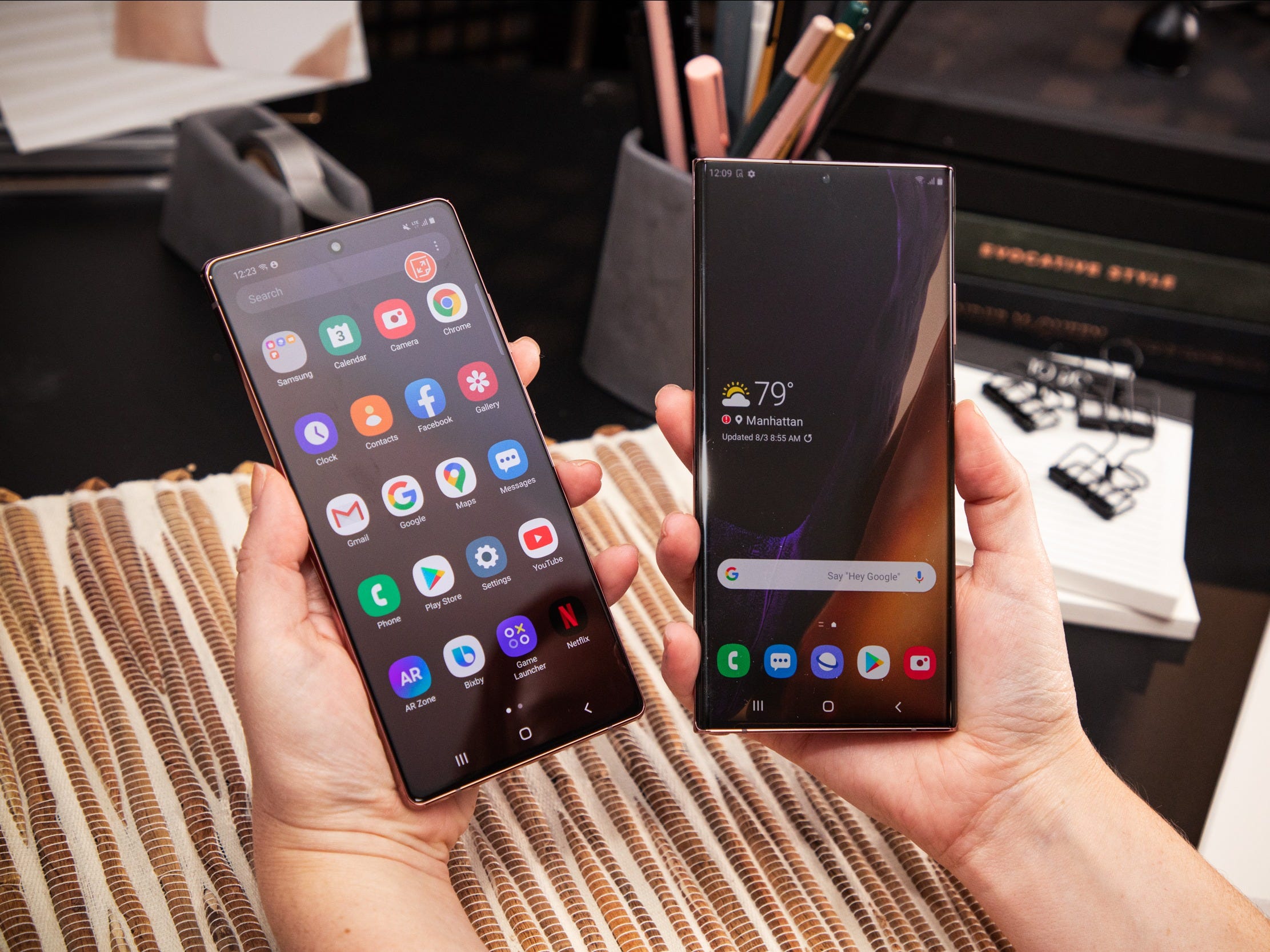- Samsung’s Galaxy Note smartphones used to stand out for their larger screens and bigger batteries, popularizing the idea of larger-screened devices that blended the appeal of a smartphone and a tablet.
- But now, there’s little that differentiates the Galaxy Note line from Samsung’s popular Galaxy S line, making the company’s smartphone lineup feel saturated.
- Samsung has typically positioned the Note 20 as being a device for “power users,” while its S line is more mainstream.
- But in a world where everyone is essentially a smartphone “power user,” the Note 20 feels less relevant than ever.
- Visit Business Insider’s homepage for more stories.
If you were to pick up the smartphone you had back in 2012, it would probably feel like a Tic Tac compared to the mobile device you’re carrying around today.
Samsung’s first Galaxy Note, released back in 2011, is partially to thank for the shift toward large-screened devices we’ve experienced over the last decade. While most gadget makers like Apple prided themselves on miniaturizing technology to make mobile devices even more pocket-friendly in the smartphone’s early days, Samsung pioneered the idea that phones should be getting bigger, not smaller.
Samsung’s Galaxy Note phones used to stand out for their larger screens, bigger batteries, more powerful specifications – and of course, their included S Pen stylus. Now, however, there’s little that differentiates the new Note 20 and Note 20 Ultra from their Galaxy S20 cousins other than the S Pen, raising questions about why Samsung continues to release so many similar phones at nearly the same price point.
That’s especially true when comparing the Note 20 Ultra against the Galaxy S20 Ultra. In fact, the Note isn’t even Samsung’s top-of-the-line smartphone anymore, despite the company positioning it as a device for so-called “power users.”
The Galaxy S20 Ultra is more expensive, starting at $1,400 compared to the $1,300 Note 20 Ultra. With that heavier price tag, the Galaxy S20 Ultra brings a higher-resolution telephoto lens and front-facing camera compared to the Note 20 Ultra, an option to add more memory than the Note 20 Ultra, and a bigger battery. Plus, the S20 Ultra features a camera that can zoom at up to 100x compared to the Note 20 Ultra's 50x zoom - although the practicality and usefulness of such a close zoom is up for debate.
The two major features found on the Note 20 Ultra that are missing from the S20 Ultra are the former's signature S Pen stylus and its Ultra Wideband technology support. Ultra Wideband tech, which is also found in Apple's iPhone 11 lineup, makes it easier for smartphones to pinpoint the exact location of other nearby devices for file sharing and other features.

The standard $1,000 Galaxy Note 20, meanwhile, shares much in common with the $1,200 Galaxy S20 Plus, albeit at a more affordable price. Both phones have a 6.7-inch display - although the S20 Plus' features a higher resolution - and both come with nearly identical camera setups. (The S20 Plus also has an additional camera for measuring depth unlike the Note 20).
Samsung has always positioned the Note as being for power users - i.e., those who use their phones more than the average person. With the Note 20, Samsung reiterated this point by demonstrating the phone's deeper integration with Windows 10 and its compatibility with Xbox Game Pass, framing it as a device for people who work and game on their phones more than usual.
That distinction made more sense back in 2011, but feels irrelevant in 2020 when essentially everyone is a smartphone "power user." The average amount of time spent on the mobile internet per user each day in the US was only 45 minutes back in 2011, according to data from analytics firm Zenith compiled by Vox. That grew to 190 minutes in 2018, and it's estimated to have jumped to 231 minutes in 2020.
This isn't to say there's anything wrong with the Galaxy Note 20. I have yet to spend time with the new phones, but based on what we know about them it seems like they offer just about everything you'd expect from a high-end phone. But the similarities between the Note devices and Galaxy S family just make Samsung's smartphone lineup feel too saturated.
The Galaxy Note once felt like the future at a time when smartphones still had tiny four-inch screens. It's clear that Samsung now sees foldable devices as the future, making the Note's place feel more uncertain than ever.

